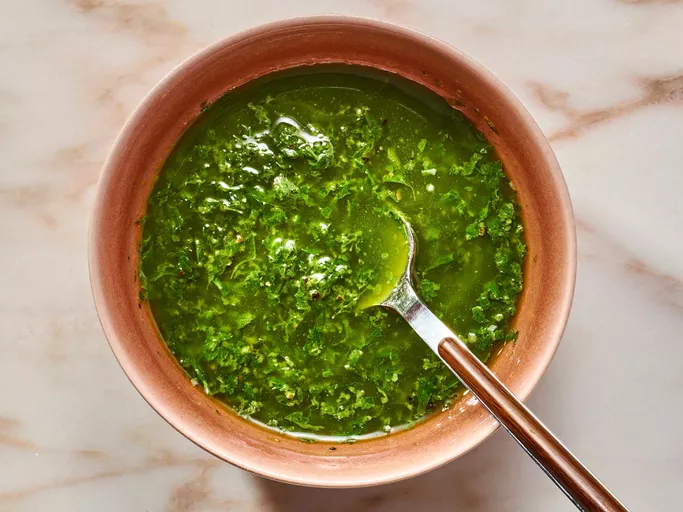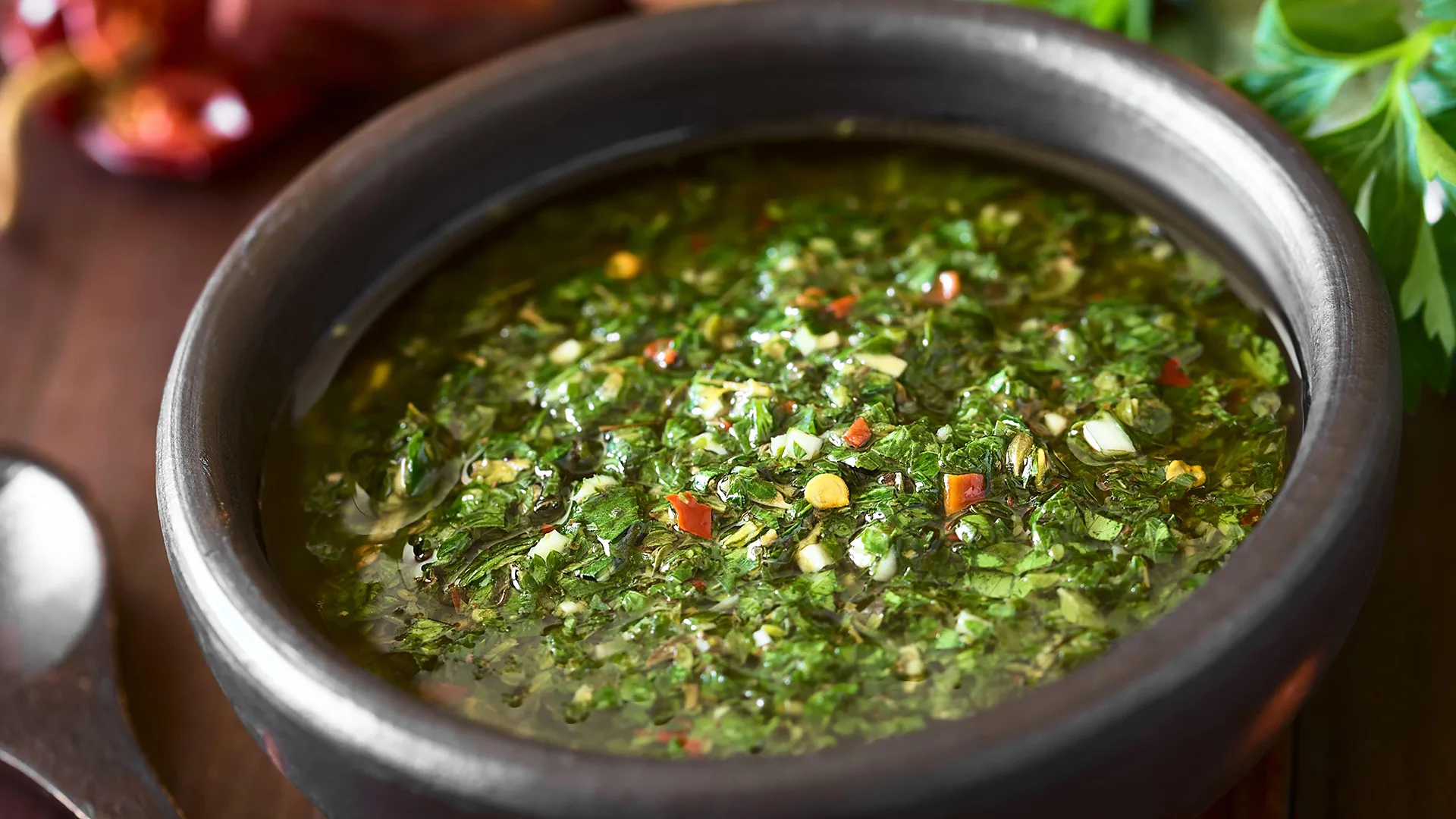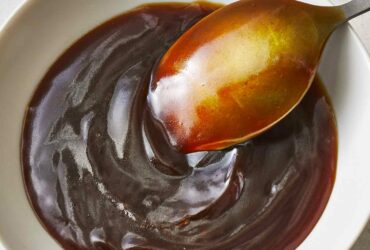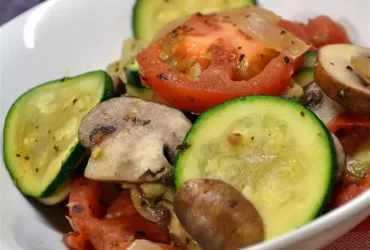History of Chimichurri
Culinary Origins in Argentina
The history of chimichurri dates back to the early 20th century in Argentina, where it originated as a condiment for grilled meats.
Chimichurri’s culinary roots are deeply rooted in Argentinean culture, specifically in the countryside and among gauchos (Argentine cowboys).
The word “chimichurri” is believed to be derived from the Basque language, which was spoken by many immigrants who arrived in Argentina during the 19th century.
In its earliest form, chimichurri was a simple mixture of herbs and spices served with asado (grilled meats) to add flavor and moisture.
Over time, the recipe evolved and spread throughout the country, with different regions developing their own variations and traditions.
The classic Argentinean chimichurri is made with parsley, oregano, garlic, red pepper flakes, salt, black pepper, and red wine vinegar or olive oil.
However, in other parts of Argentina, particularly in the north, a variation called “chimichurri criollo” is more commonly used, which adds ingredients such as cilantro, paprika, and grated ginger.
The authentic Argentinean chimichurri is characterized by its bright green color, slightly spicy flavor, and tangy aroma.
In Argentina, chimichurri is an integral part of the country’s culinary identity and is often served with grilled meats, choripán (grilled sausage sandwich), and empanadas.
Culinary Origins in Argentina
The history of chimichurri in Argentina is closely tied to the country’s gaucho culture.
In the countryside, gauchos would often prepare simple meals using locally sourced ingredients such as meat, bread, and herbs.
Chimichurri was born out of this tradition, serving as a condiment to enhance the flavor of grilled meats.
The Key Ingredients
- Parsley: adds fresh flavor and aroma
- Oregano: provides earthy and herbaceous notes
- Garlic: contributes pungency and depth
- Red pepper flakes: adds a spicy kick
- Salt: enhances flavors
- Black pepper: adds heat
- Red wine vinegar or olive oil: provides moisture and acidity
The perfect balance of these ingredients creates the signature flavor profile of authentic Argentinean chimichurri.
Chimichurri has its roots in Argentinean cuisine, where it originated as a condiment to accompany grilled meats, particularly asado.
The history of chimichurri dates back to the early 19th century, when it was first used as a condiment to accompany grilled meats in Argentinean cuisine.
During that time, Argentina was under Spanish rule and was heavily influenced by European culture.
The word “chimichurri” is derived from the Basque language, in which “tximitxurri” means “a mixture of things without a particular order”.
This name aptly describes the condiment’s composition, as it is a mix of various herbs and spices that are combined together to create its unique flavor.
Traditionally, chimichurri was made with parsley, oregano, garlic, red pepper flakes, salt, black pepper, and red wine vinegar, all mixed together in a specific ratio.
The exact proportions of each ingredient can vary depending on personal taste, but the core ingredients have remained the same over time.
Chimichurri was originally used to accompany grilled meats during asado, a traditional Argentinean outdoor barbecue that involves cooking meat over an open flame.
In its early days, chimichurri was simply a condiment made from scratch by families and served alongside the main course.
It wasn’t until the 20th century that chimichurri began to gain popularity outside of Argentina, particularly among expatriates and food enthusiasts who had traveled to South America.
As Argentinean cuisine gained recognition globally, so too did its iconic condiment, which is now enjoyed not just as a traditional accompaniment to asado but also as a flavorful topping for sandwiches, salads, and grilled vegetables.
Main Ingredients of Traditional Chimichurri
- Parsley
- Oregano
- Garlic
- Red pepper flakes
- Salt
- Black pepper
- Red wine vinegar
Evolution of Chimichurri
In recent years, chimichurri has undergone a transformation to adapt to modern tastes and preferences.
Some variations include adding other herbs like cilantro or dill, using different types of oil such as olive or avocado oil, and experimenting with alternative acidity sources like lemon juice or apple cider vinegar.
These innovations have broadened the appeal of chimichurri beyond its traditional Argentinean roots, making it a versatile condiment that can be enjoyed in various ways around the world.
Evolving Traditions and Variations
The history of _Chimichurri_ is deeply rooted in the culinary traditions of Argentina and Uruguay, where it has been a staple condiment for over a century.
The word “_Chimichurri_” itself is believed to have originated from the Basque language, spoken by immigrants who arrived in South America from Spain and France in the 16th century.
In those days, _Chimichurri_ was known as “chimín chirí,” which means “to mix” or “to blend,” reflecting its origins as a simple mixture of herbs and spices used to flavor meats and vegetables.
Over time, the recipe for _Chimichurri_ evolved and spread throughout Argentina and Uruguay, where it became an integral part of local cuisine.
The traditional ingredients of _Chimichurri_ are still simple and flavorful: parsley, oregano, garlic, red pepper flakes, red wine vinegar, olive oil, salt, and black pepper.
However, as with any evolving tradition, various regional and personal variations have emerged over the years, incorporating different herbs, spices, and flavorings to suit local tastes.
In some areas of Argentina, for example, _Chimichurri_ is made with lemon juice instead of vinegar, while in others, it’s flavored with cumin or coriander seeds.
Other variations have also been influenced by immigrant communities and cultural exchanges, incorporating flavors such as paprika, saffron, or even Asian-style sauces like soy sauce or hoisin sauce.
Today, _Chimichurri_ is enjoyed not only in Argentina and Uruguay but around the world, with many chefs and home cooks experimenting with new ingredients and flavor combinations to create their own unique versions of this classic condiment.
In fact, the evolution of _Chimichurri_ has been so extensive that it’s now a staple in modern Argentine cuisine, paired with grilled meats, empanadas, choripán (grilled sausage sandwiches), and even as a dip for fries or vegetables.
Over time, the recipe has spread throughout Latin America and gained popularity globally, with adaptations that blend local flavors.
The origin of Chimichurri can be traced back to Argentina, where it has been a staple condiment for centuries. The name chimichurri is believed to come from the Basque language, in which “tximitxurri” means “a mixture of things.” This reflects the condiment’s origins as a blend of herbs and spices brought by immigrants from different parts of Europe.
The original Chimichurri recipe consists of a mixture of fresh parsley, oregano, garlic, red pepper flakes, salt, black pepper, and red wine vinegar. The ingredients are typically combined in a specific ratio, with the herbs making up about 2/3 of the mixture and the vinegar and spices comprising the remaining 1/3.
In Argentina, Chimichurri is traditionally served as a condiment for grilled meats, particularly beef. It’s also used as a sauce to add flavor to vegetables, legumes, and other dishes. Over time, the recipe has spread throughout Latin America and gained popularity globally, with adaptations that blend local flavors.
The spread of Chimichurri throughout Latin America can be attributed in part to the large number of Argentine immigrants who settled in neighboring countries such as Uruguay, Paraguay, and Chile. In these countries, the condiment was adapted to incorporate local ingredients and flavors, resulting in a diverse range of Chimichurri styles.
In Mexico, for example, Chimichurri is often made with fresh cilantro instead of parsley. In Colombia, the condiment may include additional ingredients such as scallions or hot sauce. These adaptations reflect the dynamic and creative approach to food that is characteristic of Latin American cuisine.
The global popularity of Chimichurri can be attributed in part to its versatility and ease of preparation. The condiment can be made with a variety of herbs, spices, and flavorings, making it adaptable to different tastes and cuisines. Additionally, the use of fresh ingredients ensures that Chimichurri retains its vibrant flavor and aroma, even when served at room temperature.
In conclusion, the history of Chimichurri reflects the dynamic and creative approach to food that is characteristic of Latin American cuisine. From its origins in Argentina to its spread throughout Latin America and beyond, this condiment has evolved over time to incorporate local flavors and ingredients. Today, Chimichurri remains a staple condiment in many parts of the world, enjoyed for its bold flavor and versatility.
Whether served as a sauce for grilled meats or as a dip for vegetables, Chimichurri is a delicious and flavorful addition to any meal. Its rich history and cultural significance make it a condiment that continues to inspire creativity in the kitchen.
Authentic Chimichurri Recipe Ingredients and Preparation
The Essential Components: Herbs and Spices
The authentic Chimichurri recipe is a classic Argentinean condiment made from fresh herbs, spices, garlic, and vinegar, typically served with grilled meats, such as steak, chorizo, or choripán.
- The essential components of an authentic Chimichurri recipe include:
- Fresh parsley leaves (about 2 cups)
- Fresh oregano leaves (about 1/4 cup)
- Garlic cloves (about 4-5)
- Red pepper flakes or red pepper seeds (about 1 teaspoon)
Salt
The herbs and spices play a crucial role in the flavor profile of Chimichurri, and it’s essential to use fresh and high-quality ingredients.
Parsley is the primary herb used in Chimichurri, providing a bright, green flavor. Oregano adds a slightly bitter and earthy taste, while garlic contributes a pungent aroma.
The red pepper flakes or seeds add a spicy kick, which can be adjusted to suit personal taste preferences. Salt enhances the flavors of the other ingredients without overpowering them.
For the preparation of Chimichurri, place the parsley leaves and oregano in a food processor or blender with the garlic, salt, and red pepper flakes. Process until well combined but still slightly chunky.
Add the olive oil slowly through the top of the processor while continuously processing until you achieve the desired consistency.
Transfer the Chimichurri mixture to a bowl and whisk in the red wine vinegar or lemon juice, depending on your preference.
Store the Chimichurri in an airtight container in the refrigerator for up to one week. Let it come to room temperature before serving with grilled meats.
The authentic Chimichurri recipe can be adjusted and modified to suit individual taste preferences, but this basic recipe captures the traditional flavors of Argentinean cuisine.
A traditional chimichurri recipe requires fresh oregano, parsley, garlic, salt, and red pepper flakes for its distinctive kick.
Chimichurri is a classic Argentinean condiment that adds flavor and zest to grilled meats, vegetables, and bread. The authentic recipe relies heavily on fresh herbs and spices to create a bold, tangy sauce.
The base of this herb-infused mixture consists of fresh oregano, parsley, garlic, salt, and red pepper flakes. These ingredients are mixed together in a specific ratio to achieve the perfect balance of flavors.
To make an authentic chimichurri recipe, start by gathering 2 cups of fresh parsley leaves, 1 cup of fresh oregano leaves, and 4 cloves of garlic. Mince the garlic using a press or finely chop it with a knife to release its oils.
Mix the minced garlic with 1/2 teaspoon of salt in a bowl until well combined. The salt will help to bring out the flavors of the other ingredients and add depth to the sauce.
Add the chopped parsley, oregano leaves, and 1/4 cup of red pepper flakes (or more to taste) to the bowl with the garlic mixture. Stir everything together until the herbs are evenly distributed and slightly bruised.
To complete the chimichurri recipe, add 1/2 cup of extra-virgin olive oil and 2 tablespoons of red wine vinegar (or white wine vinegar) to the bowl. Mix everything together in a circular motion until the sauce has thickened slightly and emulsified.
The resulting chimichurri sauce should be vibrant green, fragrant, and have a balanced flavor that’s both tangy and spicy. It’s perfect for serving with grilled meats like asado or choripan, as well as vegetables, bread, or even pizza!
Vinegars and Oils: Balancing Flavors
In order to create an authentic chimichurri recipe, it’s essential to focus on the balance of flavors that this traditional Argentinean condiment has to offer. At its core, chimichurri is a simple yet flavorful mixture made from a combination of herbs, vinegar, and oil.
The most critical component of any good chimichurri is its acidity, which comes primarily from white wine vinegar or red wine vinegar, depending on the recipe. Vinegar not only adds flavor but also serves as a natural preservative, helping to extend the shelf life of the condiment.
When it comes to oils, there are a few options that work well in chimichurri: olive oil is a popular choice for its rich and fruity flavor, while canola or grapeseed oil provide a neutral taste. The key to balancing flavors lies not only in selecting the right types of ingredients but also in achieving the perfect ratio between vinegar and oil.
A general rule of thumb for making chimichurri is to use a 4:3 or 5:4 ratio of vinegar to oil, although this can vary depending on personal preference. Using a high-quality olive oil will provide a more complex flavor profile compared to neutral oils like canola or grapeseed.
The addition of aromatics such as garlic and oregano adds depth to the flavor without overpowering the other ingredients. Fresh herbs such as parsley, cilantro, or dill should be added in abundance for that authentic taste of chimichurri.
It’s worth noting that there are variations on the classic recipe where chili flakes or red pepper flakes may be added to give the sauce a spicy kick. This will ultimately depend on personal taste preferences and whether you’re looking to add an extra layer of flavor to your dish.
Once all ingredients are combined, it’s essential to let the mixture sit for at least 30 minutes to allow the flavors to meld together before serving. This not only allows the acidity to balance out but also lets the herbs infuse their essence into the vinegar and oil.
The acidity of red wine vinegar or apple cider vinegar balances the richness of olive oil.
To make an authentic Chimichurri recipe, you will need a few key ingredients that come together to create a tangy and herby condiment perfect for accompanying grilled meats in traditional Argentinean cuisine.
The base of the Chimichurri is made with fresh herbs, including _parsley_ , oregano, and sometimes cilantro. The specific amounts can vary depending on personal taste, but a general rule of thumb is to combine 1/4 cup of chopped _fresh parsley_, 2 tablespoons of chopped oregano, and 1 tablespoon of chopped cilantro.
The acidity in the Chimichurri comes from red wine vinegar or apple cider vinegar, with some preferring one over the other. The general consensus is that red wine vinegar provides a richer and more complex flavor profile than apple cider vinegar, while still maintaining its signature tanginess.
A commonly used ratio for this component of the Chimichurri is 2 tablespoons of either red wine vinegar or apple cider vinegar per cup of oil. For example, if you’re using olive oil as your base, you could combine it with 1/4 cup of red wine vinegar and then proceed with the rest of the recipe.
Other ingredients commonly found in traditional Chimichurri recipes include _garlic_, which is added at a rate of about one minced cloves per cup, and salt to taste. The ratio of garlic can also be adjusted based on personal preference, as some find it too overpowering while others prefer the punchy flavor.
To prepare Chimichurri, place all the ingredients in a food processor or blender and blend until well combined but still slightly coarse. Some people like to leave it at this stage for an extra herby texture, while others prefer to continue blending to achieve a finer consistency.
Transfer your finished Chimichurri to a bowl, cover with plastic wrap and refrigerate for a minimum of 30 minutes or up to several hours to allow the flavors to meld together.
Serve this tangy sauce at room temperature over grilled meats such as _beef_ , pork, or chicken. You can also use it as an accompaniment to bread, which has become increasingly popular in Argentinean cuisine for dipping into Chimichurri.
Tips for Serving Authentic Chimichurri
Presentation Matters: Garnishes and Pairings
Serving authentic chimichurri is a crucial part of enhancing the flavor and experience of this traditional Argentinean condiment. When it comes to presentation, garnishes play a significant role in adding visual appeal to your dish.
Here are some tips for serving authentic chimichurri:
- Garnish with fresh herbs: Sprinkle chopped fresh parsley or oregano on top of the chimichurri to give it a pop of color and fragrance. This will not only add visual appeal but also enhance the flavor of the dish.
- Use a mortar and pestle: Serve the chimichurri in a mortar and pestle, just like they do in Argentina. This will give your guests an authentic experience and allow them to appreciate the effort that goes into making this condiment.
- Pair with grilled meats: Chimichurri is typically served with grilled meats such as steak, chorizo, or chicken. Make sure to pair it with a variety of meats to showcase its versatility.
- Offer crostini or bread: Serve the chimichurri with crusty bread or crostini to allow guests to dip and spread the sauce. This will not only add to the flavor but also make for a fun and interactive dining experience.
In terms of specific pairing ideas, here are some suggestions:
- Grilled steak with chimichurri: This is perhaps the most classic combination. Grill a thick cut of beef and serve it with a generous helping of chimichurri.
- Chorizo and chimichurri: Grilled chorizo sausage served with chimichurri makes for a flavorful and spicy combination.
- Grilled chicken with chimichurri: This is a great option for those looking for a lighter and healthier alternative. Grill chicken breast and serve it with a side of chimichurri.
Remember, the key to serving authentic chimichurri is to focus on simplicity and authenticity. Avoid over-accessorizing or adding unnecessary ingredients that may detract from the flavor and experience of this traditional condiment.
Traditionally, chimichurri is served as a dipping sauce with grilled meats, such as asadostyle beef or choripan.
The key to serving authentic chimichurri lies in its preparation and presentation, which can elevate the flavor and aroma of any grilled meat dish.
To start, it’s essential to use high-quality ingredients that are fresh and fragrant, particularly when it comes to the herbs and citrus used in the sauce. Fresh oregano leaves should be used instead of dried ones, as they add a more vibrant flavor to the dish.
The parsley used in chimichurri is typically curly-leaf parsley rather than flat-leaf parsley. This variety has a milder flavor that complements the other ingredients without overpowering them.
When it comes to garlic, it’s crucial not to overdo it. A few cloves are sufficient to add depth to the sauce, but too much can make it overwhelming and unbalanced.
The acidity in chimichurri comes from red wine vinegar or apple cider vinegar, which helps to cut through the richness of the meat. Red wine is traditionally used as it adds a more complex flavor profile, but feel free to use apple cider if you prefer a milder taste.
A common mistake when preparing chimichurri is not allowing the flavors to meld together before serving. It’s best to prepare the sauce at least 30 minutes in advance to allow the herbs and spices to infuse their flavors into the oil, resulting in a more well-rounded and harmonious taste.
When it comes to presentation, serve chimichurri on the side as a dipping sauce for grilled meats. This allows each person to control how much of the sauce they want to use, which is especially important when working with strong flavors like those found in traditional Argentinean dishes.
A good rule of thumb when serving chimichurri with grilled meats is to have both on the table at the same time for optimal flavor. If the meat has been marinated in advance, allow it to come up to room temperature before grilling. This helps the flavors penetrate deeper into the meat and creates a more evenly cooked texture.
Another tip when serving chimichurri is to garnish the dish with fresh herbs or edible flowers for added color and visual appeal. The bright green of fresh parsley or oregano adds a pop of color, while edible flowers like violas or pansies add delicate beauty without overpowering the dish.
When it comes to serving chimichurri in a more formal setting, consider using small ramekins or ceramic pots as an additional garnish for each portion. These add a touch of elegance and help keep the sauce separate from the main dish.
Expert Advice from Argentinean Chefs
Serving authentic chimichurri is a matter of great pride for many Argentinean chefs, and with good reason. This tangy and herby condiment has been a staple in Argentine cuisine for centuries, accompanying grilled meats, vegetables, and bread like a trusted companion.
So, what sets authentic Argentinean chimichurri apart from the variations you might find elsewhere? For starters, it’s all about balance: pungent parsley, oregano, garlic, red pepper flakes, shallots, red wine vinegar, and extra virgin olive oil come together in perfect harmony.
Here are some expert tips for serving authentic chimichurri:
First and foremost, don’t even think about using jarred or pre-made chimichurri. Fresh is best here, so take the time to make it from scratch with high-quality ingredients. We’re talking about using fresh parsley, not wilted leftovers, and freshly toasted oregano, not stale spices.
Next, pay attention to the acidity level of your red wine vinegar. You want that bright, snappy quality that makes your mouth water without overpowering the other flavors. Argentinean chefs swear by a good dry red wine for this purpose.
When it comes to garlic and shallots, remember: less is more. Mince them finely so they distribute evenly throughout the mixture, but don’t overdo it or you’ll end up with a pungent mess.
Oregano is another crucial component of authentic chimichurri. Don’t be shy – use that toasted oregano to add depth and warmth to your condiment.
Now we come to the pepper flakes: Argentinean chefs love their chimichurri spicy, but don’t go too crazy here either. You want just a hint of heat to balance out the brightness of the parsley and vinegar.
Finally, when it comes time to serve, be generous with your chimichurri! Argentineans love slathering it on grilled meats, especially asado-style beef or chorizo. Use it as a dip for crusty bread, too – the acidity and herbaceousness will cut through even the heartiest of meals.
With these expert tips, you’re ready to serve authentic chimichurri like a true Argentinean chef. Buen provecho!
Some chefs recommend letting the flavors meld together for at least 30 minutes before serving to allow the herbs and spices to infuse.
To serve authentic chimichurri, it’s essential to understand that this Argentinean condiment is more than just a mixture of herbs and spices. It’s an integral part of the culture and is often served with grilled meats, especially asados. When preparing chimichurri, use fresh ingredients, including oregano, parsley, garlic, red pepper flakes, red wine vinegar, salt, and black pepper.
The proportions of these ingredients can vary depending on personal preference, but a general ratio to start with is two parts oregano, one part parsley, three cloves of minced garlic, 1/2 teaspoon red pepper flakes, 1/4 cup red wine vinegar, 1/4 cup olive oil, and salt and black pepper to taste.
Some chefs recommend letting the flavors meld together for at least 30 minutes before serving to allow the herbs and spices to infuse. However, this can vary depending on how long you’re willing to wait. For a more immediate gratification, you can make it fresh just before serving.
When serving chimichurri with grilled meats, consider pairing it with some crusty bread or crackers to mop up the flavorful sauce. You can also serve it as a dip for empanadas or crostini. In Argentina, it’s not uncommon to see chimichurri served alongside other condiments like salsa criolla and salsa golf.
One of the keys to serving authentic chimichurri is to use high-quality ingredients and to make it with love and care. This attention to detail will pay off in the form of a delicious and fragrant sauce that complements any grilled meat or vegetable dish.
- Best LeadsGorilla Alternatives for 2025 - April 22, 2025
- Best Leadzai Alternatives for 2025 - April 22, 2025
- Best LeadSwift Alternatives for 2025 - April 21, 2025















